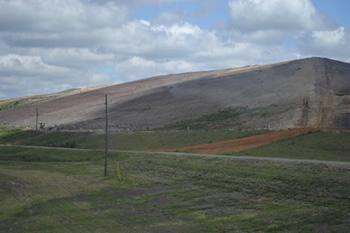Solid Waste
The amount of waste generated from a cleanup can vary depending upon the clean-up methods that are selected. For example, decontaminating, as opposed to disposing of all contaminated material, can reduce the amount of waste generated. The EPA Homeland Security Research Program (HSRP) evaluates decontamination technologies to guide decision makers in the selection of the best technologies for their situation. HSRP evaluates the effectiveness of each technology as well as the volume of waste generated by the technology.
Waste segregation can help minimize waste by keeping contaminated material away from non-contaminated materials. HSRP has incorporated its research on the persistence, fate, and transport of contaminants after release into recommendations regarding waste segregation to avoid contaminant migration and human exposure.
Treatment of waste to remove or inactivate contamination can render the waste less toxic, which can lead to more options for waste transport and disposal. Treatment can also be used to reduce the volume of waste. Volume reduction is especially needed for certain types of waste either due to transportation constraints or lack of disposal capacity. Treatment may also be required before transportation of the waste to a recycling or disposal facility to further protect human health and the environment, or to meet a disposal facility's waste-acceptance criteria.  Closed cell of an active landfill
Closed cell of an active landfill
Although there are few options for disposal of waste contaminated with pathogens, toxins, radiological and some chemical threats, some landfills could potentially take treated waste. Different categories of landfills accept different types of waste. For example, hazardous waste must be placed into a Resource Conservation and Recovery Act (RCRA) Subtitle C landfill, municipal solid waste can be placed into a RCRA Subtitle D landfill, and low-level radioactive waste must go to a landfill permitted to accept such waste. The HSRP does research to support disposal of these wastes in landfills.
A unique waste disposal challenge is posed by mass animal mortalities resulting from natural disasters, animal disease outbreaks, or chemical, biological and radiological incidents. HSRP has been supporting the US Department of Agriculture's Animal and Plant Inspection Service (USDA/APHIS) in evaluating existing methods and develping new methods to dispose of animal carcasses in a manner that is protective of public health and the environment.
Related Links
- EPA's Agriculture Page
- EPA's Agriculture and Carcass Disposal Page
- EPA's Managing Materials and Waste for Homeland Security Incidents Page
Related Products
- Best Practices for Management of Biocontaminated Waste
- The use of Combustion Process Modification to Capture Cesium from Combustion of Contaminated Biomass
- Practical Considerations and Operational Recommendations for Waste Staging for Wide-Area Radiological Releases
- Products Related to Waste Treatment
- Products Related to Landfilling
- Animal Carcass Disposal Research Products
